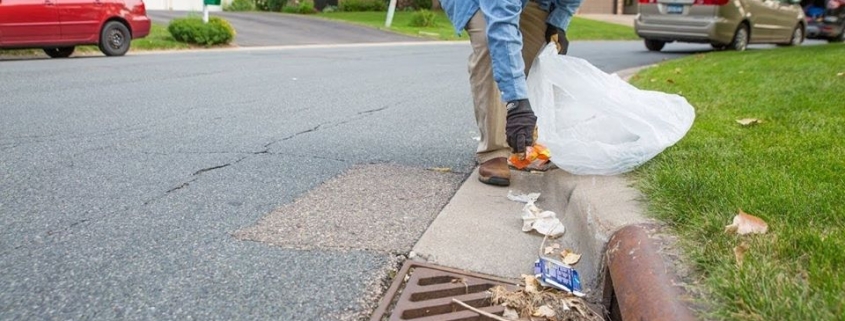Prevent Flooding – Adopt A Storm Drain
Everyone knows that trash is not good for our waterways, but many people unwittingly contribute to water pollution because they do not understand that “natural” trash like leaves, grass clippings and pet waste can become pollutants when they enter the water. Additionally, storm drains are part of the local flood control system helping to move storm water away from homes and businesses. They act as a conduit discharging storm water into local stormwater ponds and drainage canals.
When organic debris like leaves and grass wash down a storm drain, they decompose and release nutrients like phosphorous and nitrogen. These nutrients are food for algae and other aquatic plants. Additionally, people can add to the nutrient load by applying fertilizers which can wash down storm drains after a rain.
Debris blocking storm drains can be a local flooding hazard. Even an average afternoon rainstorm can cause local street flooding if the water has nowhere to go. Just a small number of organic debris and trash on top of a drain grate can reduce drainage capacity. By keeping the storm drain clear of debris, it can function as designed allowing storm water to flow away from your home and discharge into flood control canals.
Some helpful tools for cleaning a storm drain include: a broom, a rake, a trash grabber, gloves, an orange cone and/or safety vest, a shovel or dustpan and a pail or yard waste bag. Never remove the grate or otherwise attempt to clean inside the catch basin. Clean only the surface of the storm drain grate and the area around it. If the drain seems to be plugged or have any problems, contact your community board/property manager or local municipality to address the issue.
Adopting a storm drain only takes a small amount of your time. Let friends and neighbors know about your commitment and invite them to adopt a storm drain too. When we all sweep up, rake up and pick up, we protect our properties and waterways.




